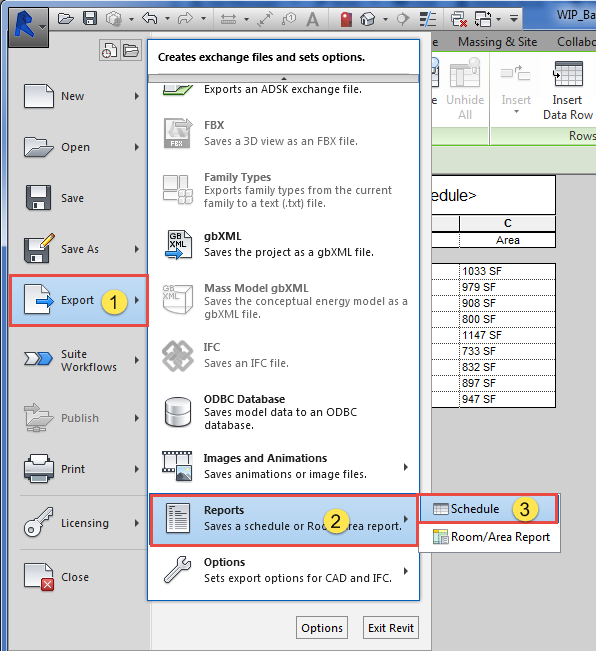Revit Add Ins: Supercharge Your Style and Modeling
Grasping the Art of Information Assimilation: How to Seamlessly Import Excel Info Into Revit
Are you battling to import Excel files right into Revit smoothly? Look no additional! In this post, we will certainly direct you with the procedure of mastering the art of data assimilation. Discover the significance of smooth combination in Revit and check out the Excel file format for Revit combination. Prepare yourself to prepare your Excel information effortlessly and follow our detailed overview to import documents into Revit. With our ideal practices, you'll achieve data assimilation success quickly. Let's start!
Understanding the Relevance of Data Integration in Revit
Understanding the value of data assimilation in Revit is critical for seamless importing of Excel data. It enables you to successfully manage and update info throughout the entire project when you incorporate data from Excel right into Revit. This integration makes certain that your layout and building process is precise and current.
By integrating information, you can easily import and update parameters, schedules, and even geometry in Revit. This gets rid of the requirement for hands-on information entrance, saving you time and minimizing the risk of mistakes. With Revit's data integration capabilities, you can keep uniformity and accuracy in your job, while additionally improving collaboration amongst team members.

Checking Out the Excel Data Layout for Revit Combination

In order to successfully incorporate Excel files right into Revit, it is important to make certain that the data is formatted properly. This includes correctly identifying rows and columns, as well as structuring the information in a method that works with Revit's data schema. Revit uses details criteria and categories to organize data, so it is necessary to straighten the Excel data with these parameters to make certain a smooth integration.
Additionally, it is essential to note that Revit only supports specific information kinds when importing from Excel. These consist of text, numbers, and days. Any various other information kinds, such as solutions or conditional formatting, will not be acknowledged by Revit and may create problems throughout the combination procedure.
Preparing Your Excel Information for Seamless Import Into Revit
To ensure a smooth integration procedure, you'll need to properly style and label the columns and rows in your Excel data prior to importing it right into Revit. Start by analyzing your Excel information and recognizing which columns and rows include pertinent info for your Revit task.
Following, make certain that the information in each column is effectively formatted. For instance, if you have a column for dimensions, make certain that all dimensions are constantly formatted in the same devices of dimension. Revit counts on constant format to accurately revit tools translate and import data.
Furthermore, it is very important to look for any type of vacant cells or inconsistencies in your data. Revit might not be able to check out or import information from cells that are empty or have mistakes. It is recommended to examine your Excel data and clean up any inconsistencies before importing it into Revit.
Step-By-Step Guide to Importing Excel Info Into Revit
As soon as you have actually appropriately formatted and labeled your Excel information, you can conveniently import it right into Revit by following this step-by-step guide. To begin, open Revit and navigate to the "Insert" tab. revit plugins.
Following, a dialog box will show up, permitting you to tailor the import setups. Below, you can pick the worksheet you desire to import, specify the range of cells to import, and choose the ideal systems for your data. Once you've made your choices, click "OK" to continue.
Revit will currently display a sneak peek of your Excel information. Take a moment to examine the sneak peek and ensure that every little thing looks appropriate. If needed, you can make modifications to the import settings by clicking on the "Settings" button.
Best Practices for Information Assimilation Success in Revit
See to it you comply with these best techniques to make certain effective assimilation of data in Revit. First and primary, it is important to organize your data in Excel prior to importing it right into Revit. This suggests making certain regular calling conventions, appropriate formatting, and exact information depiction. Next, make use of Revit's integrated tools for information mapping. This will certainly allow you to match the columns in your Excel data with the equivalent parameters in Revit. Bear in mind the information and devices types when mapping the information, as any inconsistencies can cause mistakes in the assimilation procedure.
One more essential technique is to routinely confirm and upgrade your data. In addition, make use of data recognition tools within Revit to recognize any errors or variances in the integrated information.
Finally, it is advised to establish a clear operations for information combination. This consists of specifying responsibilities and duties, establishing up an interaction network between team participants, and developing a routine tempo for data updates and evaluations. By following these finest techniques, you can make sure a successful and smooth assimilation of data in Revit, ultimately improving the effectiveness and precision of your job.
Final Thought
In conclusion, grasping the art of data combination is critical for seamless import of Excel files into Revit. Recognizing the significance of information integration in Revit is the first step towards successful combination.
When importing information from Excel right into Revit, it is crucial to recognize the documents layout and just how it can impact the integration process (revit plugins). Revit uses certain criteria and groups to organize data, so it is important to straighten the Excel information with these criteria to guarantee a seamless combination
Be conscious of the data and units kinds when mapping the data, as any inconsistencies can lead to mistakes in the assimilation procedure.
In addition, make usage of information recognition devices within Revit to recognize any type of errors or inconsistencies in the incorporated information.
